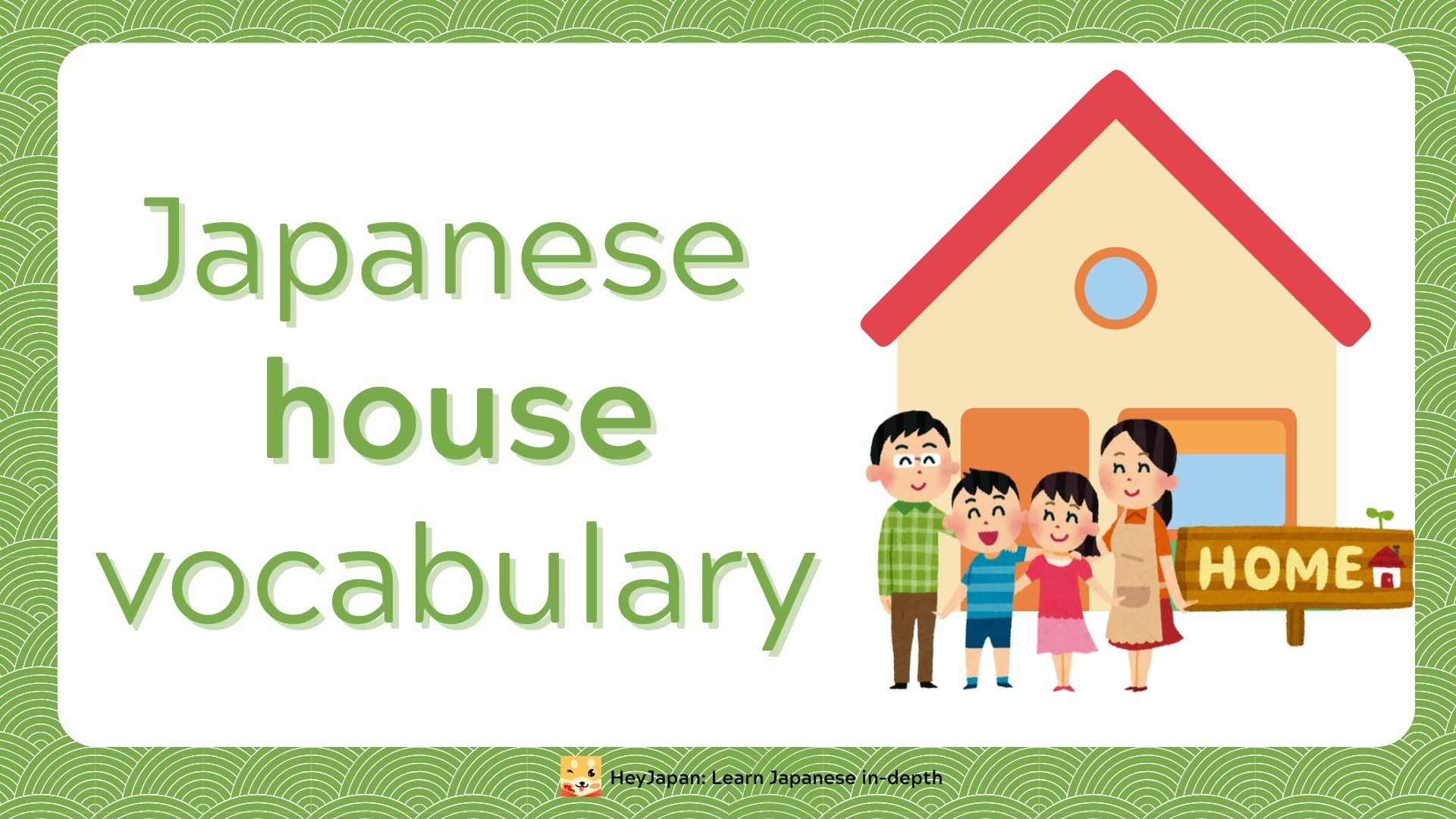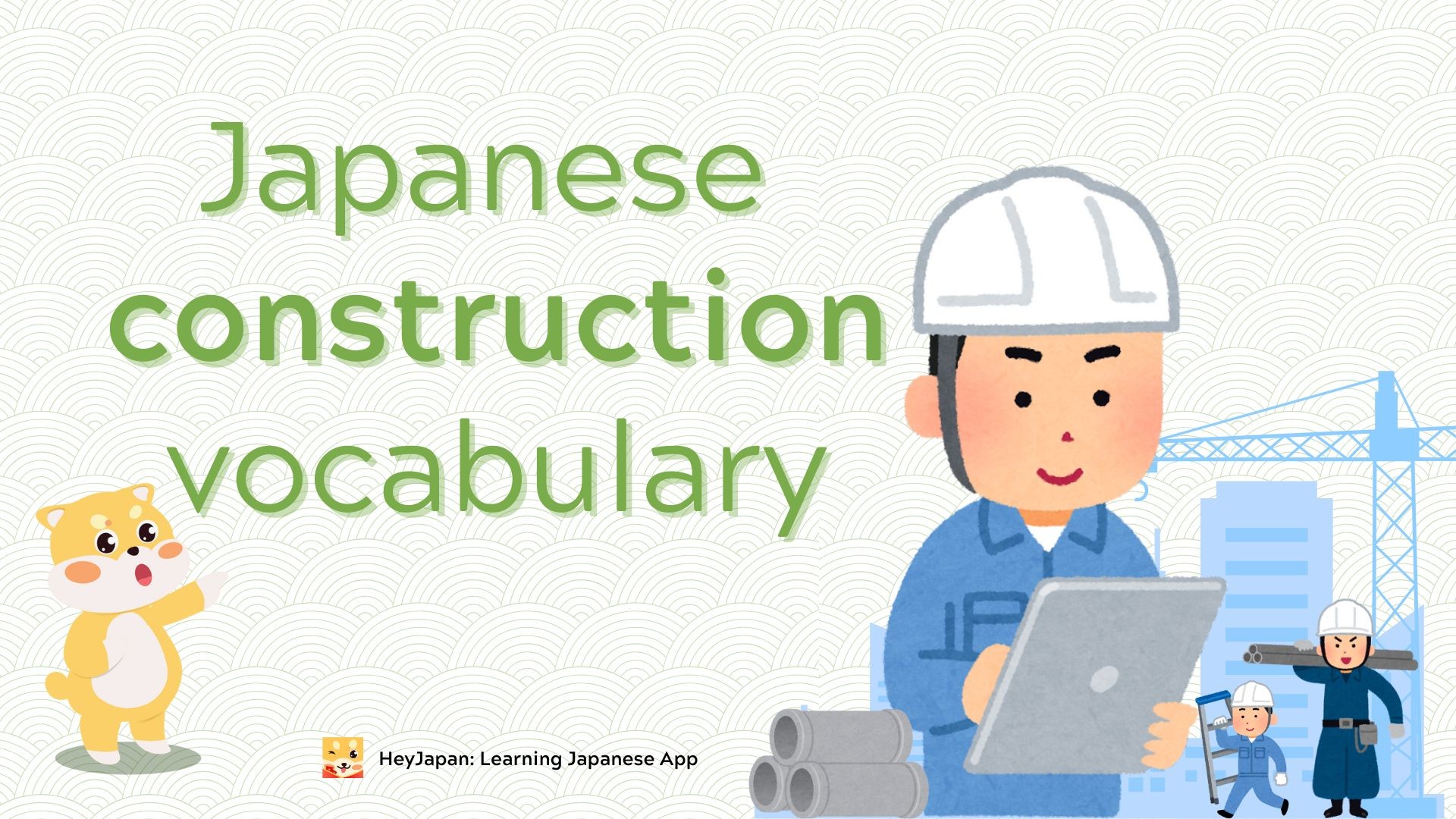- Basic Japanese House Vocabulary
- Key Rooms and Spaces
- Adjectives
- Traditional Japanese Home
- Common Furniture and Household Items
- Cultural Elements
- Useful Phrases
- Grammar Phrases to Talk About Houses
The vocabulary surrounding Japanese homes is unique and deeply intertwined with the culture and history of the country.
Whether you're exploring traditional homes or modern apartments, understanding key terms will help you communicate effectively and navigate various aspects of Japanese life. This guide covers the essential Japanese house vocabulary, from parts of the house to furniture and cultural differences in home design.
Basic Japanese House Vocabulary
.jpg)
Before diving into specific rooms or furniture, it's important to know some basic terms related to Japanese homes:
- 家 (Ie) – House
- 家族 (Kazoku) – Family
- 住宅 (Juutaku) – Housing
- 部屋 (Heya) – Room
- 建物 (Tatemono) – Building
- 窓 (Mado) – Window
- ドア (Doa) – Door
- 庭 (Niwa) – Garden / Yard
- バルコニー (Barukonii) – Balcony
- 廊下 (Rouka) – Corridor
- 階段 (Kaidan) – Stairs / Staircase
- 床 (Yuka) – Floor
These basic words will help you understand the structure and parts of a house in Japan.
Key Rooms and Spaces
Japanese homes are often smaller than Western houses, and the layout tends to prioritize functionality and efficiency. Here are some of the key rooms you’ll encounter:
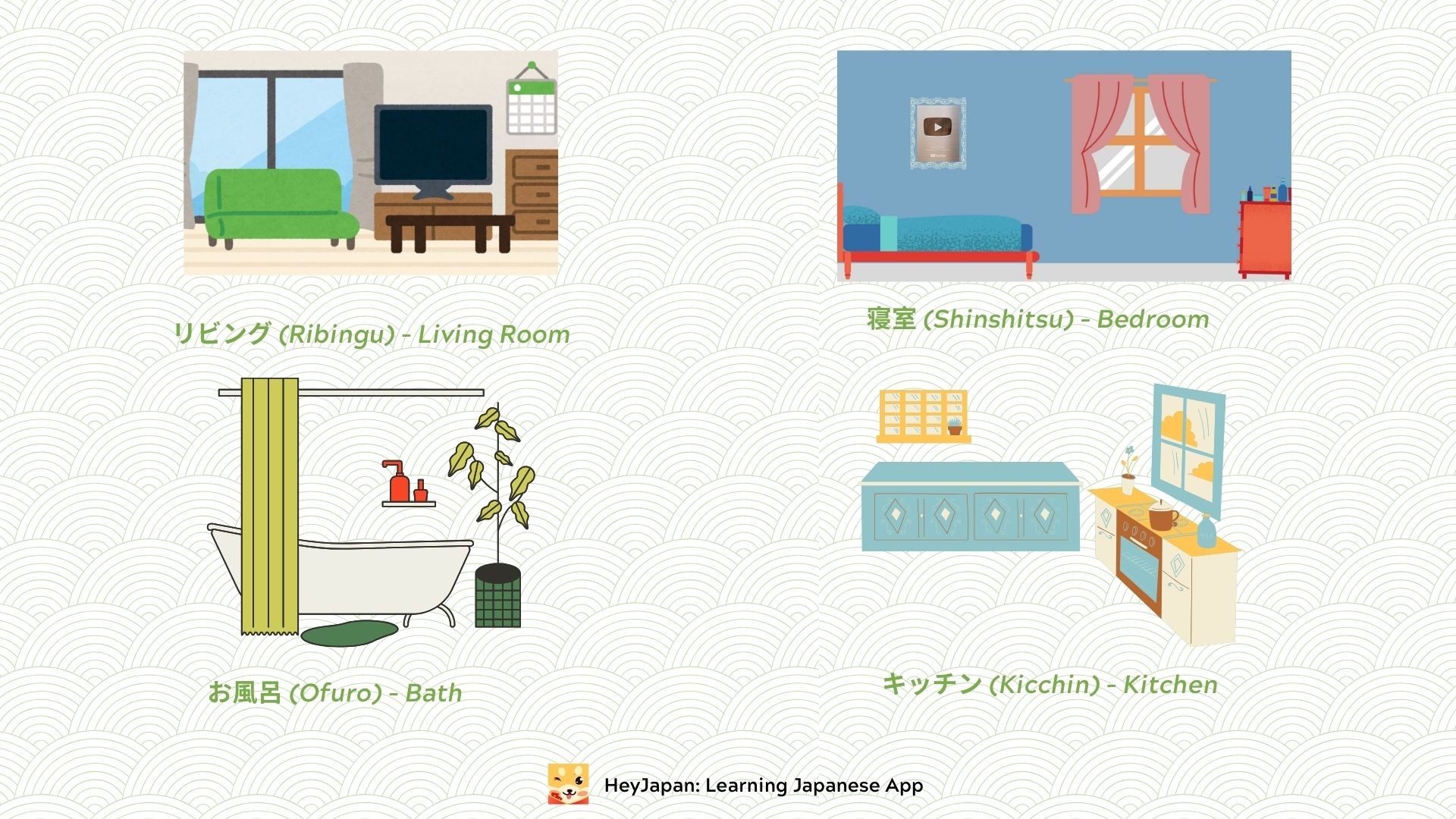
- リビング (Ribingu) – Living Room
The main area for relaxing, socializing, and family gatherings.
- 寝室 (Shinshitsu) – Bedroom
The room where people sleep. Japanese bedrooms often have futons that are rolled up during the day to save space.
- キッチン (Kicchin) – Kitchen
The kitchen, where meals are prepared. In Japanese apartments, kitchens are often compact but highly functional.
- お風呂 (Ofuro) – Bath
Japanese bathrooms often consist of a separate 浴槽 (yokusou), or bathtub, and a シャワー (shawaa), or shower. Ofuro refers specifically to the bath.
- トイレ (Toire) – Toilet
Toilets in Japan are often very high-tech, equipped with features like heated seats and bidets.
- 玄関 (Genkan) – Entryway
The traditional space at the entrance where people remove their shoes before entering the main areas of the house.
Adjectives
Japanese adjectives can help you describe the features of a house in detail. Here are some common adjectives:
- 広い (Hiroi) – Spacious
- 狭い (Semai) – Small
- 快適 (Kaiteki) – Comfortable
- 古い (Furui) – Old
- 新しい (Atarashii) – New
- 綺麗 (Kirei) – Clean/Beautiful
- 暗い (Kurai) – Dark
- 明るい (Akarui) – Bright
- 静か (Shizuka) – Quiet
- うるさい (Urusai) – Noisy
Using these adjectives, you can describe rooms, areas of the house, or general conditions in more detail.
Traditional Japanese Home
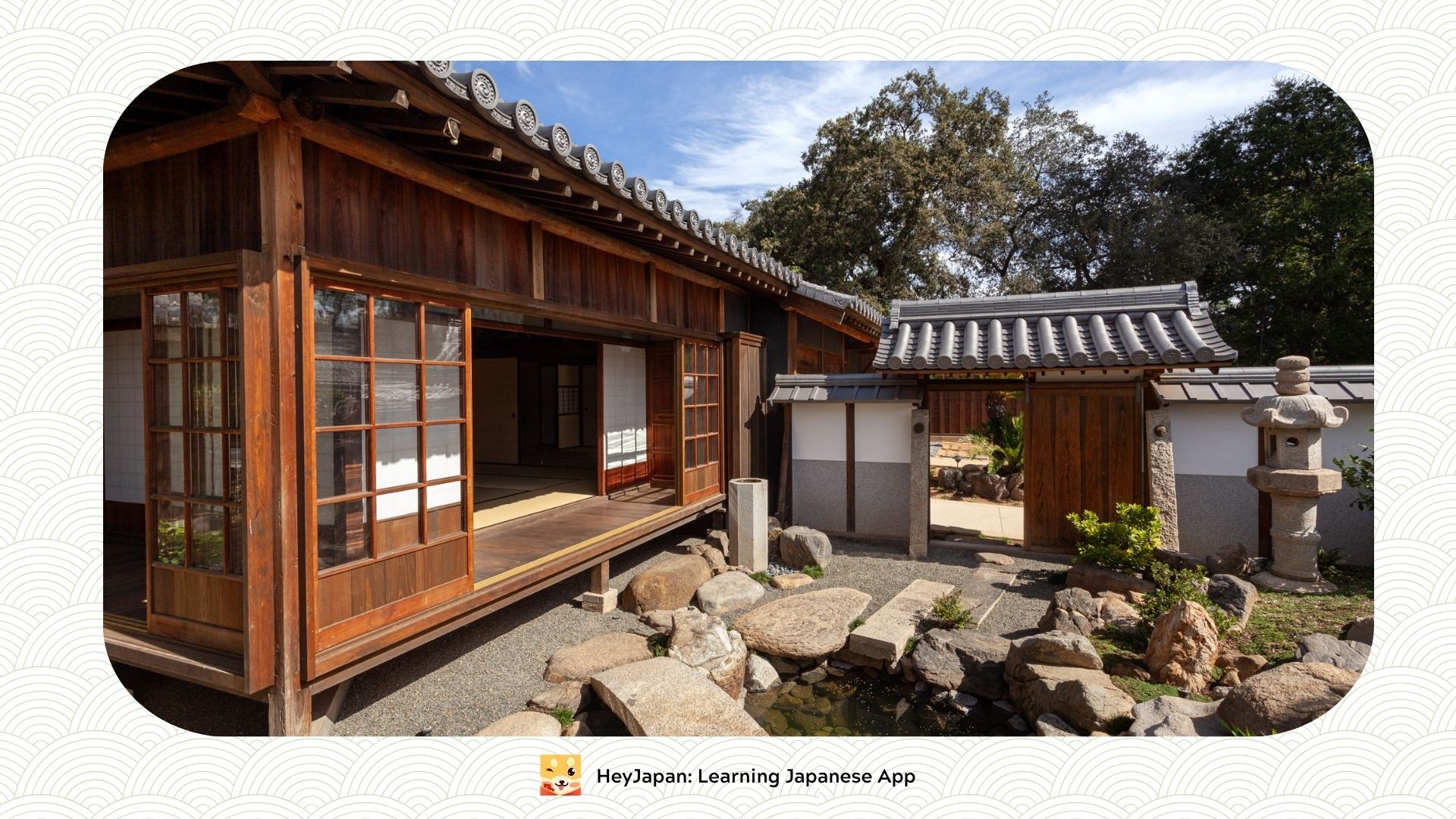
Traditional Japanese homes have unique architectural features that differ greatly from Western homes. Here are some words related to traditional houses:
- 畳 (Tatami) – Tatami mats
These are straw mats used to cover floors, especially in Japanese-style rooms.
- 障子 (Shouji) – Sliding paper doors
Used to partition spaces in traditional homes, shouji are paper-covered wooden frames that allow light to filter through.
- 襖 (Fusuma) – Sliding doors
Fusuma are similar to shouji, but they are thicker and often used to close off rooms or create privacy.
- 座敷 (Zashiki) – Tatami room
A traditional room with tatami mats, where guests are often entertained.
- 火鉢 (Hibachi) – Traditional heater
Used to heat the home in colder months, hibachi is a small, portable heating device.
- 坪 (Tsubo) – Traditional measurement of space
One tsubo is equivalent to about 3.3 square meters (35.5 square feet), often used to measure room size.
Common Furniture and Household Items
.jpg)
Knowing the names of furniture and common items in a Japanese home will help you in everyday conversations. Here are some essential items:
- ソファ (Sofa) – Sofa
Commonly found in living rooms, though not as commonly used in traditional homes.
- テーブル (Teeburu) – Table
A basic piece of furniture for eating or working.
- 椅子 (Isu) – Chair
Chairs are commonly used with tables, especially in modern homes.
- 布団 (Futon) – Futon
A traditional bedding set that includes a mattress and blanket, typically placed on the tatami floor.
- クローゼット (Kurozetto) – Closet
A small wardrobe or storage space for clothes.
- 棚 (Tana) – Shelf
Shelves for storage, often found in various rooms.
- 鏡 (Kagami) – Mirror
Mirrors are common in bedrooms and bathrooms.
Cultural Elements
.jpg)
Japanese houses often incorporate unique elements that reflect the country’s culture and values. Understanding these terms can help you navigate different aspects of living in Japan:
- 茶室 (Chashitsu) – Tea room
A dedicated space in the house for the Japanese tea ceremony, which holds cultural significance.
- 縁側 (Engawa) – Veranda
A traditional porch or veranda that connects different rooms in a Japanese house, often offering a peaceful view of the garden.
- 庭 (Niwa) – Garden
Many Japanese homes, especially traditional ones, include a niwa, or garden, which may feature elements like rocks, ponds, and bonsai trees.
- 書斎 (Shosai) – Study
A quiet, often separate room used for reading or studying.
- 風呂桶 (Furooke) – Bath bucket
Used in traditional Japanese bathing practices, this small bucket is used to pour warm water over oneself before entering the bath.
Useful Phrases
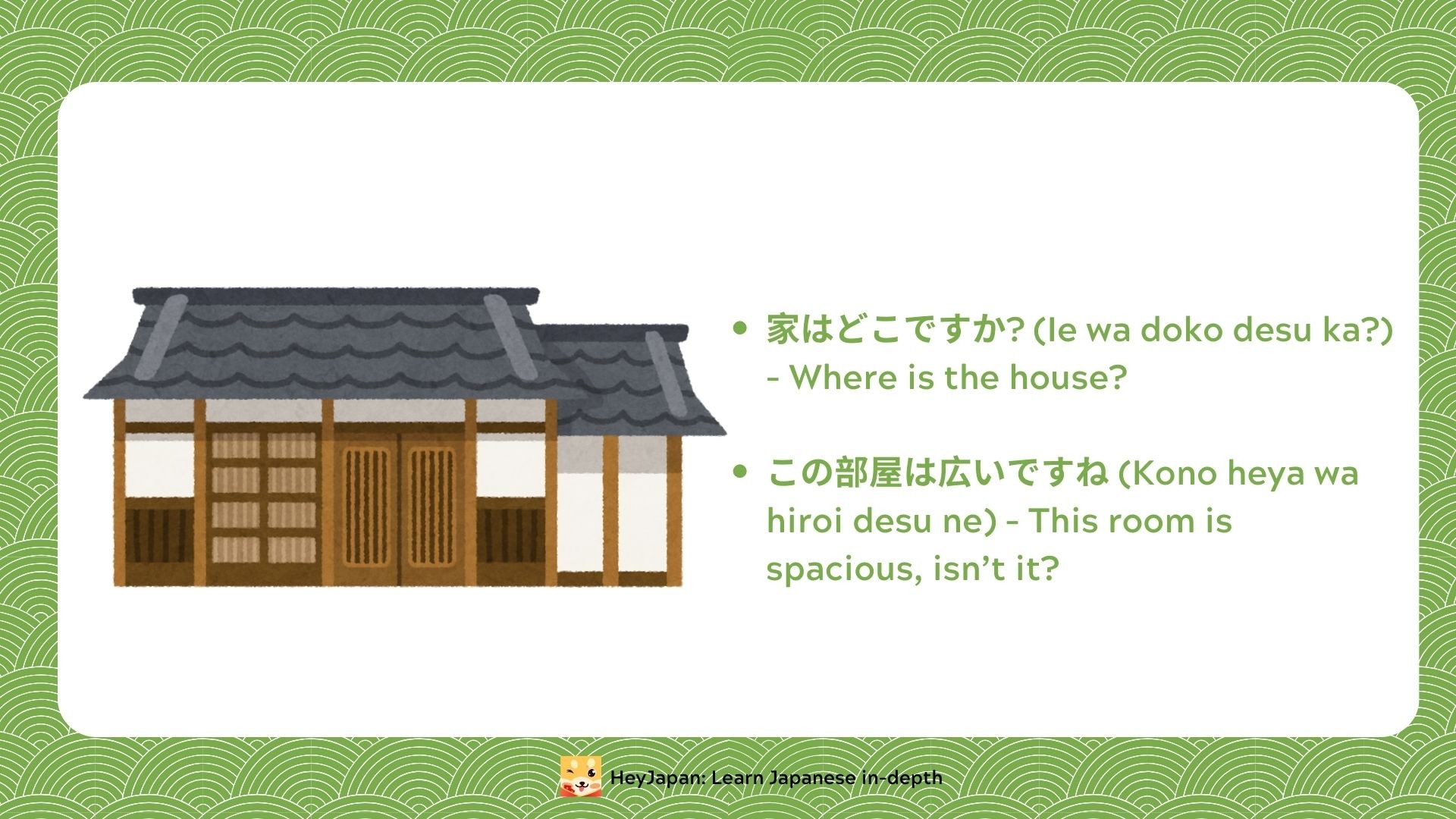
In addition to knowing the vocabulary, here are some useful phrases to help you communicate about houses in Japanese:
- 家はどこですか? (Ie wa doko desu ka?) – Where is the house?
- この部屋は広いですね (Kono heya wa hiroi desu ne) – This room is spacious, isn’t it?
- この家には畳がありますか? (Kono ie ni wa tatami ga arimasu ka?) – Does this house have tatami?
- リビングに行こう (Ribingu ni ikou) – Let’s go to the living room.
- トイレはどこですか? (Toire wa doko desu ka?) – Where is the toilet?
- 玄関で靴を脱いでください (Genkan de kutsu wo nuide kudasai) – Please take off your shoes at the entryway.
- ここで座りましょう (Koko de suwarimashou) – Let’s sit here.
Grammar Phrases to Talk About Houses
Here are some common grammar structures to help you talk about homes in Japanese:
- 家は広いです (Ie wa hiroi desu) – The house is spacious.
- この部屋は小さいです (Kono heya wa chiisai desu) – This room is small.
- 寝室はどこですか? (Shinshitsu wa doko desu ka?) – Where is the bedroom?
- キッチンは広いですね (Kicchin wa hiroi desu ne) – The kitchen is spacious, isn’t it?
- お風呂に入る (Ofuro ni hairu) – To take a bath.
- リビングにテレビがあります (Ribingu ni terebi ga arimasu) – There is a TV in the living room.

